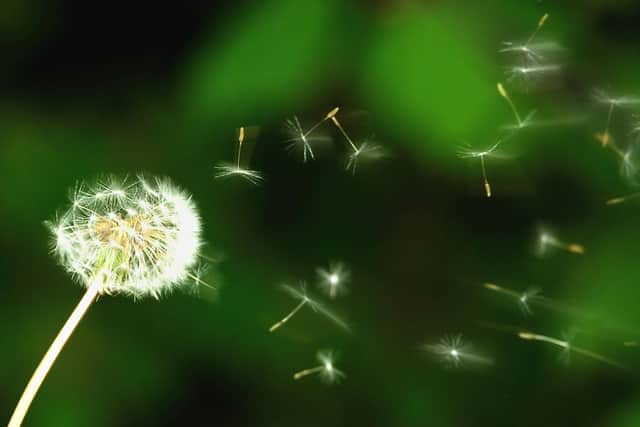Very high pollen forecast in Scarborough - here's how long it's going to last
and live on Freeview channel 276
Grass pollen levels are now in their peak season, and the Met Office is forecasting a very high pollen count in Scarborough until Wednesday.
Fungal spores are at medium risk and there is a lot of weed pollen, mainly from nettles.
Advertisement
Hide AdAdvertisement
Hide AdThe pollen peak in June can be masked by how wet, dry, warm or cold it is, according to the Met Office, but the hot weather we are currently experiencing can intensify the pollen count.


Often coastal areas see much lower pollen counts compared to their inland counterparts due to winds blowing off the sea but unfortunately at the moment winds are coming inland from the west.
What is pollen?
Pollen grains produce male gametes - i.e. sperm cells. The granules find their way to the female parts of the same plants, eventually resulting in fertilisation.
To the naked eye, it is a fine and powdery yellow substance but an individual grain can usually only be observed with a microscope.
Advertisement
Hide AdAdvertisement
Hide AdPollen typically gets moved around by insects, wind, and water.
Plants can release billions of grains at once time - all nature’s method of ensuring they reach female plants.
How long is pollen season?
Though pollen levels are highest in the summer months, pollens of one species or another are present in the environment from January to October.
Levels are highest at the start of the day when pollen rises with the warming air and again at the end of the day when it gets cooler.
Advertisement
Hide AdAdvertisement
Hide AdTree pollen tends to be seen from January to May, then grass pollen through the summer and weed pollen in late summer through to October.
What can you do to reduce symptoms?
According to Allergy UK these are some things you can do to help with pollen allergy:
- Monitor pollen forecasts daily and stay indoors wherever possible when the count is high (generally on warmer, dry days).
- On high pollen days, shower and wash your hair after arriving home and change your clothing
Advertisement
Hide AdAdvertisement
Hide Ad- Avoid drying washing on a clothes-line outside when pollen counts are high
- Apply an effective allergen barrier balm around the edge of each nostril to trap or block pollens and other allergens and help prevent a reaction.
What can you do to treat symptoms?
The NHS suggest:
- put Vaseline around your nostrils to trap pollen
- wear wraparound sunglasses to stop pollen getting into your eyes
- keep windows and doors shut as much as possible
- vacuum regularly and dust with a damp cloth
- buy a pollen filter for the air vents in your car and a vacuum cleaner with a HEPA filter
If symptoms persist, speak to a pharmacist or your GP.